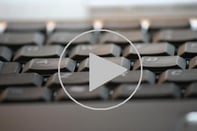Published on
Want Some MOOC With Your TV Dinner? (Part 2)

For the first part of this series, which explains the transformation of correspondence courses over the decades, please click here.
Given the possibilities presented by Massive Open Online Courses (MOOCS); instead of simply looking at achievement gains (or losses), we must begin to ask how self-directed local and global teams as well as personal visits from a MOOC instructor are helping to foster important moments of reflection and change. Not every outcome can be determined from test scores, page-hit rates or student retention data. Lives change. People change. Education is a key vehicle for fostering such life transformations. And MOOCs have the potential to change lives on a grander scale than perhaps any previous form of learning delivery.
As noted by the media hype machine, the MOOCs instructed by Chuck Severance and Paul Kim are rather modest in size. Some MOOCs from Stanford, Coursera and Udacity have reached out to hundreds of thousands of people at one time. Imagine the life-changing possibilities or empowerment moments today compared to the age of TV-based distance education back in the 1970s and 1980s.
In a MOOC, unlike the TV and correspondence courses of the previous century, you learn and interact with peers you never would have met otherwise. If you want to localize or personalize the learning, you can form study groups in your city or village wherein you meet other MOOC participants to discuss learning. Online planning aids might organize such meetings. If you want to work with those outside of your community, you can debate, connect and reflect on ideas using social media, like blogs and wikis. The Venture Lab at Stanford University has a suite of cool tools for its MOOCs that enable participants to easily form teams to discuss topics of interest. Massachusetts Institute of Technology computer scientists have also built a seemingly endless stream of online learning tools or “widgets” during the past decade, such as those for creating interactive timelines, browsing video content and graphically representing data. Apparently, with the recent emergence of edX and MITX, two MOOC providers, their focus has turned to tools for more intense learner interaction, collaboration and assessment, instead of basic data representation and content access.
The experimentation with, and embrace of, MOOCs during the past year is not a unique phenomenon in the United States. In my travels to three cities in Australia in November 2012, MOOCs and online learning seemed to be making the news every day. In Sydney, I saw a demonstration of a new tool called Ruksacs, designed by Rick Bennett and his colleagues at the University of New South Wales. Ruksacs enhances the social as well as intellectual environment of online learning. With this system, bookmarks of favorite resources for an individual’s studies that are found on the Web can be saved and shared with all of that person’s Ruksacs friends or study group members, and portfolios of Ruksacs users, including images, sounds and videos come alive in a showcase gallery. And there are perhaps a dozen other such knowledge-sharing and social networking tools like Ruksacs. A course taught with such tools continually expands as thousands of participants locate, rate and discuss the learning resources that inspire them.
We live in an age of rich and engaging learning environments where the instructor acts as a tour guide or concierge for one’s learning. As alluded to earlier, Chuck Severance personalized his course by traveling to places such as New York City, Los Angeles, Chicago, Seattle, London and Amsterdam to hold office hours and meet with students in cafes, bookstores and pubs. When the course finished, he visited Seoul, South Korea and then Barcelona, Spain, meeting highly energized groups of his MOOC participants and quickly posting their testimonials and observations to YouTube and Twitter. After that, Severance engaged in similar “office hour” meet-ups with participants at a Starbucks in Manila, Philippines. And, keep in mind that all of this was after the course had officially ended.
While Chuck Severance engages in personal journeys to meet his online students, other MOOC instructors personalize their courses with online discussions, link sharing and virtual office hours using free and open tools such as Piazza, Course Networking and CourseSites by Blackboard. This is a vastly different age for professors and other experts to share years of accumulated scholarly knowledge and ideas with the vast wisdom of the crowd enrolled in their courses. Sure, as with TV courses of the past, there are often video lectures from the instructor and other forms of direct instruction with extensive passive viewing. But there is also a wealth of additional resources and experiences to customize your own learning path and interact with others about your learning choices.
Without a doubt, MOOCs can be taught with limited social media or learning interaction, as displayed by the online ‘shovelware’ of early online courses during the 1990s. Such passive learning environments align well with a TV-dinner mentality. So the question must be asked: do you want a little MOOC with your TV dinner, or will MOOCs nourish us and quench our thirst for knowledge in ways never before experienced on the planet? I vote for the latter, though I also realize from my own prior learning experiences that lives can and do change with the former. Whatever your decision regarding the nature of the instructional delivery format, let’s MOOC to it, shall we? Hundreds of millions of people around the planet are likely depending on it. And those people are more important than our debates.
Author Perspective: Educator



